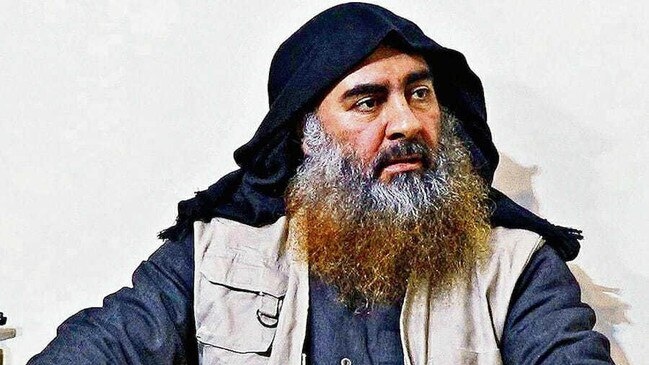ISIS appoints successor to slain Baghdadi
Islamic State has officially confirmed the death of its leader, Abu Bakr al-Baghdadi, and named his successor.

Islamic State has officially confirmed the death of its leader, Abu Bakr al-Baghdadi, and named his successor, calling on followers to pledge their allegiance to the new “caliph”.
Abu Ibrahim al-Hashimi al-Qurayshi was named as Baghdadi’s successor in an audio message published on ISIS’s official channel on the Telegram messaging service. The name Qurayshi marks membership of the Quraysh tribe of the Prophet Mohammed. He was identified as a long-standing ISIS commander and cleric.
The leader’s name was not immediately recognisable to ISIS experts, but could be a new nom de guerre for an existing commander, possibly Haji Abdullah, previously identified as a likely successor to Baghdadi.
Baghdadi, 48, blew himself up with two of his children in a tunnel under a compound in northwest Syria on Saturday after he was cornered in an American special forces raid.
ISIS also confirmed the killing of its former spokesman, Abu Hasan al-Muhajir, in a separate strike a day after Baghdadi’s death. The recording was made by the new spokesman, who identified himself as Abu Hamza al-Qurayshi. He said ISIS would continue and that it was “closer to the shores of Europe than ever”.
The announcement came amid revelations that ISIS paid protection money to its al-Qa’ida rival to shelter Baghdadi and other leaders as its “caliphate” crumbled. Receipts recovered from former ISIS hideouts in Syria shed new light on how the ISIS leader came to be sheltering in a compound belonging to the al-Qa’ida affiliate, Hurras al-Din, deep inside Syria’s Idlib province.
A book of receipts, illustrative of the organisation’s meticulous record-keeping, revealed multiple payments totalling $US67,000 to Hurras al-Din “to pay for the preparation of bases for the brothers arriving from al Khair province”, according to The New York Times. Al Khair refers to the Syrian province of Deir Ezzor, where ISIS made its last stand after being forced from its former stronghold in Raqqa. The receipts date from 2017 to last year, suggesting that many senior ISIS fighters made the move from eastern Syria well ahead of the final battle in the town of Baghouz.
Baghdadi was moved to Idlib from the Syrian-Iraqi border in April, according to the commander of the mostly Kurdish Syrian Democratic Forces who cultivated the insider who led them to his hiding place. General Mazloum Abdi told NBC News the informant was “a personal security official for al-Baghdadi himself, in charge of al-Baghdadi’s movements”.
Part of his job was to secure safe houses to which Baghdadi would move for refuge, including the Hurras al-Din compound in Barisha. He was one of only a handful of people outside Baghdadi’s family who were permitted to meet him directly.
ISIS and Hurras al-Din were previously bitter rivals, so evidence of a back channel, even if only for monetary gain, will alarm counter-terrorism experts. Thousands of ISIS fighters and other members remain at large or in sleeper cells throughout Syria and Iraq and there are fears that they may take advantage of Baghdadi’s death to put aside their differences and team with other jihadist groups.
The Pentagon said that its analysts were combing through a trove of electronics retrieved from Baghdadi’s final hiding place. Two men from the compound were taken into US custody and are undergoing interrogation at a base in Iraq. Four women and one man, wearing suicide vests and resisting the attack forces, were shot dead. Eleven children retrieved from the compound before the attack began were handed over to locals for their safety.
The Times



To join the conversation, please log in. Don't have an account? Register
Join the conversation, you are commenting as Logout